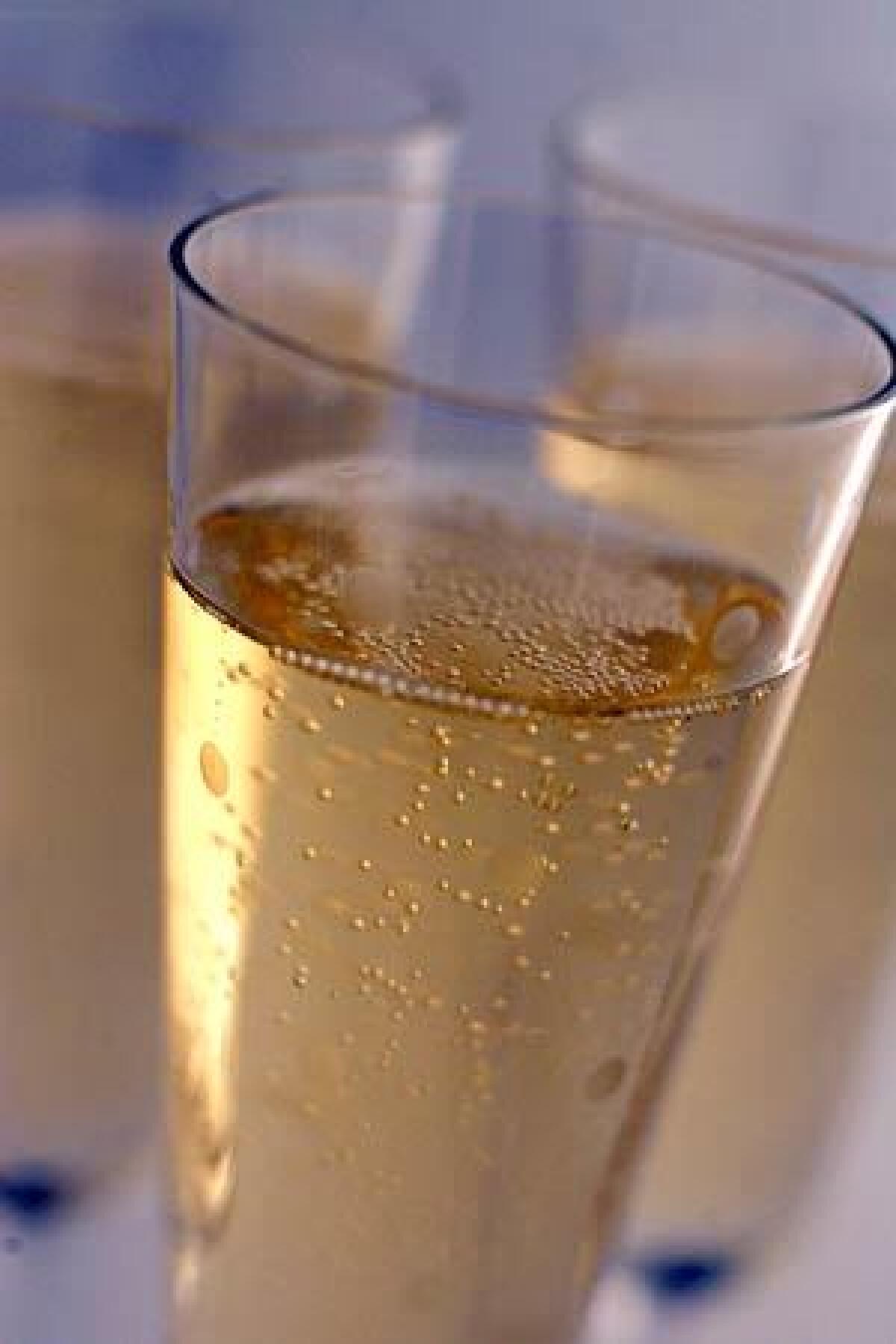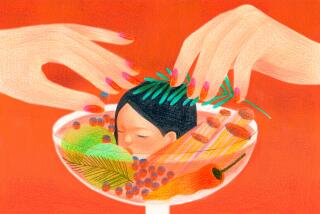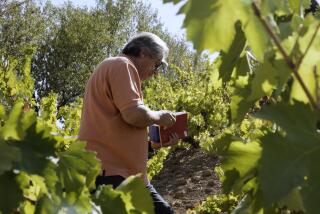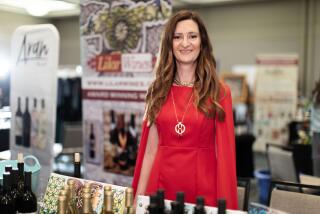Prosecco shows its serious side

PROSECCO is definitely the bubbly of the moment in Los Angeles. Go to Osteria Mozza and they’re pouring it by the glass from magnum bottles. Down the street at All’Angelo, there are 10 different bottlings on the wine list. Retailers are having a hard time keeping the stuff in stock.
Pretty impressive for a wine that only a few years ago most people knew mainly as a cocktail ingredient.
“Five or six years ago, trying to sell Prosecco was like trying to sell Asti Spumante or something,” says Lance Montalto, the Italian wine buyer for Wine House in West Los Angeles, which usually carries eight to 10 different Proseccos. “It just had this huge stigma, like trying to sell rosé in the old days. Now it’s just a force. It practically sells itself.”
Part of the reason for this new popularity is the increasing availability of really good wines. Until recently, most Prosecco in the United States came from large industrial producers; today a wine shopper in Southern California can choose among a dozen or more high-quality labels.
Prosecco, a sparkling wine from north of Venice, Italy, is a wine of obvious charms. It is light and fizzy, delicate and fruity. When you taste it, you think of almonds, apples and pears and sometimes hints of grapefruit or lemon, followed by a pleasingly bitter floral finish. It adapts well to all sorts of foods, including spicy Asian fare and salty dry salame (and, of course, the classic melon and prosciutto).
Prosecco is delicious, but it doesn’t demand the seriousness Champagne does (nor does it cost as much). It’s a sparkling wine that’s intended for celebrating the small pleasures of everyday life, such as sharing food with friends.
“Prosecco is more an aperitif than a serious wine like a Champagne would be,” says Stefano Ongaro, co-owner of All’Angelo on Melrose Boulevard. “It is a perfect way to start a meal with that symbolic ‘Cin-cin’ [‘Cheers’] that welcomes all guests to the table.”
Ongaro’s affection for the wine is nearly a birthright. He grew up in Venice, about half an hour south of where the grapes are grown. Back home, he says, drinking Prosecco is a part of daily life. “It is like water for us; we start drinking Prosecco at 10:30 in the morning with a Pellegrino,” he says.
Indeed, for many people Prosecco still means Bellini -- that summer cocktail of wine and white peach juice made famous at Harry’s Bar in Venice’s Hotel Cipriani.
But because Prosecco does not demand to be taken too seriously does not mean it should be taken lightly. There are several gradations of quality, and paying attention will reap benefits.
Most Prosecco comes from the broad, flat Treviso plain along the Piave River. These wines are made in industrial quantities and are friendly, generic and perfect for quaffing around the pool or for mixing cocktails. They can usually be found for around $10 to $12.
Now it gets good
TO get the good stuff, you need to pony up only another few dollars -- say $15 or $16 per bottle. Look for wines with Valdobbiadene or Conegliano on the label. These are two towns in the foothills above the plains that have given their names to the Prosecco Denominazione di Origine Controllata, and the wines from there will be richer and more concentrated.
There is quite a rivalry between the two towns, so labels usually will specify one or the other. According to Italian wine authority Burton Anderson, wines from around Conegliano tend to be softer and creamier while those from Valdobbiadene are drier and crisper.
There is one level still higher. Within that larger Prosecco DOC, a small 260-acre area called Cartizze consists of tiny vineyards that crawl up the side of an imposing hill. Wines from there are even more concentrated and aromatic. But though these wines are relatively scarce, they cost only a little more than a decent California Chardonnay -- usually less than $35.
However, some Prosecco cognoscenti advise taking the Cartizze label with a grain of salt. They point out that annual production seems to far outstrip the number of bottles that should be allowed under the tightly controlled harvest regulations.
And Ongaro says these most Champagne-like of Proseccos are probably more popular in the United States than they are in Italy. Along the same lines, Italians seem to prefer Proseccos that are classified “extra-dry” (meaning they contain a small amount of unfermented sugar) to the steelier Bruts.
That small amount of sugar doesn’t create sweetness so much as it rounds out the fruit flavors, making them seem smoother and fuller. This is the character that true Prosecco lovers seek; in Italy, Brut is considered mainly an export wine.
“We make a big deal about the fact that Prosecco is not trying to be Champagne, so don’t compare them,” says Robert Rogness, who at his Wine Expo store in Santa Monica was one of the first Southern California retailers to get behind the wine in a big way -- only natural given that he specializes in Italian and sparkling wines
“What Prosecco is is a perfect aperitif wine. You do not want in any way, shape or form those kinds of yeasty, toasty flavors you get from méthode champenoise wines.”
Indeed, Prosecco is built differently than Champagne. Rather than getting its bubbles the way Champagne does, by secondary fermentation in the bottle, Prosecco gets them through the Charmat process, named after the Frenchman who patented it in the early 20th century. (An Italian, Federico Martinotti, may actually have developed the technique earlier, but such is the fickle nature of history.)
In the Charmat process, the wine is refermented in large steel containers. This difference is more than technical; it allows wineries to process wines more or less continuously, rather than only once a year. As a result, you will rarely find vintage-dated Prosecco.
Drink it soon!
AND there’s another practical implication: Prosecco, like fino sherry, is a wine that is best when it is freshly made. Not only does long cellaring diminish it, but so does sitting on the shelf too long. Buy Prosecco at stores that sell a lot of it -- a rapid turnover ensures the freshest wine. If you have a question, ask which bottling arrived most recently.
If you find dusty Prosecco bottles, says Woodland Hills Wine Co. general manager Mike Greene, “That’s, ‘Danger, Will Robinson!’ ” At the rate this stuff is flying off the shelves these days, that would be a really bad sign.
More to Read
Sign up for Essential California
The most important California stories and recommendations in your inbox every morning.
You may occasionally receive promotional content from the Los Angeles Times.











